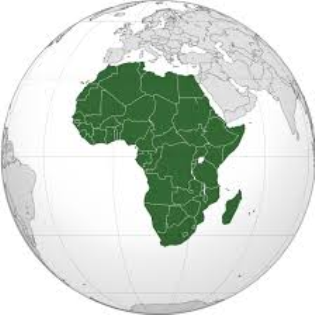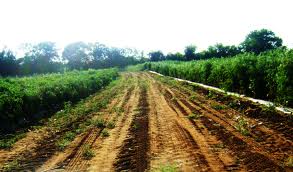SAGAMITE: HOW TO IDENTIFY A COUNTRY WITH GOOD ECONOMY

Sagamite is a bachelors graduate from one of the UK’s elite universities after an early life in Nigeria. He is an experienced management consultant that has worked with firms in a diverse range of industries both in public and private sector. His experience provides him with a catalogue of versatile and arcane knowledge. His current interests include logical structure of opinions/arguments, entrepreneurship and human psychology. He prides himself on his organic, objective and independent thinking, so the audience should expect a significant number of his articles to be contra-popular belief. He is one of Nigeria’s leading objective-Contrarian thinkers about life’s generally accepted conventional wisdom****
In light of the recent rebasing of the Nigerian GDP and the revelation that Nigeria has pipped South Africa to the title of Africa’s largest economy, which I am sure implicitly (and explicitly) gives many Nigerians a sense of pride, I think it is important for many to understand that GDP is not an absolute nor the most reliable sign of a good economy. There are better tools that provide a clearer picture of how good an economy is. A few I will go through that will show Nigeria has a long way to go and is still nowhere near many African countries, not to talk of developed countries, are:
Economic and export diversification
A good economy is highly diversified across the 3 economic sector hypothetically described by economists:
1) Primary sector – Raw materials
2) Secondary sector – Manufacturing
3) Tertiary sector – Services
Nigeria’s economy is still predominantly dependent on one commodity: Oil. A commodity in the primary sector that accounts for over 80% of its export and also which its ownership is concentrated in the hands of a few connected people and the technical expertise is mainly provided by foreign firms.
South Africa on the other hand has a well-diversified economy spanning Mining, Arms manufacturing, Telecoms, Financial Services, Tourism etc. Over 90% of its economy lies in the Manufacturing and Services sector, compared to less than 50% of Nigeria’s. South Africa has a well-developed capability in these sectorial markets to be able to export these to consumers abroad. Many would not even know Nando’s is a South African chain.
Increasing diversification and economic exports are important features of countries’ healthy economic growth. Countries with high diversification and exports tend to have higher GDP per capita and a more resilient economy to face any shocks to the economy.
A diversified economy also tends to have more highly skilled individuals per capita, hence higher quality human capital.
In a Mckinsey report, the strategy consulting firm states that a mere 15% increase in Manufacturing and Services as a portion of GDP is associated with doubling of income per capita of that country.
Many countries like Namibia, Egypt, Morocco, Tunisia, Mauritius etc are far more diversified than Nigeria.
Unemployment rates, Average household income (PPP) and Poverty rates
An economy is not that strong no matter its size if its citizens cannot find employment, generate decent income and many of them live below the bread line.
It is well known that unemployment (as well as underemployment) is pervasive in Nigeria, and the poverty rate is completely abysmal.
Using the UN’s $2 (PPP) per day income measure, Nigeria has one of the lowest income and highest poverty rates in Africa; barely even beating one third of all African countries.
Many graduates finish education to enter an economy with hardly any jobs. It has been estimated that less than 60% of the citizens are in meaningful full-time employment despite the government providing ridiculous figures of less than 10% unemployment rate.
The unemployment rates in South Africa in reality is far less and much of it is tied to the legacy of apartheid where people were intentionally not provided with the right education nor allowed to progress as far as they can in their academics. This leaves a generation of people that cannot get good jobs in the economy and also who would struggle to mentor their wards to be successful in their academics.
Despite this, South Africa still has a lower unemployment rate at about 25%, and average household incomes are higher than Nigeria’s.
GDP (PPP) per capital
Finally, so what if the GDP is the highest?
What is more important is the productivity of the populace especially when compared on equal footing (i.e. PPP).
Nigeria’s new rebased GDP at $488bn compared to South Africa’s $384.3bn is largely unimportant once we look at the population (i.e. the capita) producing these figures.
South Africa with a population that is roughly one third of Nigeria producing virtually the same GDP is more of something to celebrate than having the biggest economy. This is a far better measure of economic productivity than merely GDP as it gives a comparison of productivity per citizen and shows how potential is underutilised.
All this tools give a better correlation with a good economy than just GDP.
So, let’s face it, Nigeria has a long way to go.
Established in March 2013, JarusHub is a Nigerian information hub with focus on career and management. It is rated Nigeria's most authoritative destination for online career resources. It parades an array of Nigerian professionals who share their career experiences with a view to bridging career information gap and mentoring a generation to success. Whether you're a student, a recent graduate or an established professional, or even an executive, you will always find something to learn on JarusHub. All enquiries to jarushub@gmail.com or 0808 540 4500. Facebook: www.facebook.com/jarushub; Twitter: @jarushub or @mcjarus.
Path to Big 4: Stream 11
April 4, 20245 Best Useful Applications Of AI in Modern World
November 17, 2023
2 comments
Let us have your say by leaving a comment belowCancel reply
Recommended For You
-
COMPANY REVIEW: SCHNEIDER ELECTRIC
April 2, 2018 -
How to Get Oil and Gas Job in Nigeria
September 14, 2017
© Copyright JarusHub. All Rights Reserved.









@ jarus i hav been a silent visitor to ur blog since its inception.and i must say u and ur team of columnist are really doing a great job here.more power to ur elbow
Thanks.